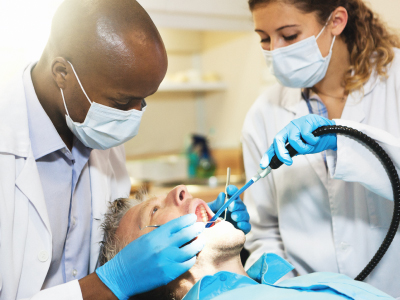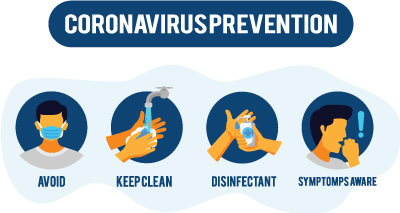Wisdom Teeth Removal
Common and painful, dental abscesses affect many people with poor dental health. We’ll explore more about dental abscesses, including how they’re caused, their symptoms, and the different types of treatments that are available.
Definition
A dental abscess is a collection of pus made from dead white blood cells, dead tissue, and bacteria that forms inside the tooth. They can affect any tooth, however, wisdom teeth are particularly vulnerable. There are two different types of dental abscesses, a periapical abscess (tooth) and a periodontal abscess (gum).
 Causes
Causes
Dental abscesses are caused by bacterial tooth infections or cavities (the result of tooth decay). Originating within the pulp chamber of the tooth (which cannot fight off infections) the bacteria multiply, spreading through the tooth down to the root and bone. The abscessed tooth will become increasingly painful, and if left untreated the infection can spread to other areas of the body, such as the jaw, facial bones, neck, or throat. In the very worst cases, an abscessed tooth will need to be extracted. A few different things can lead to decay in teeth, including:
- Poor oral health care, such as a lack of brushing and flossing.
- A blow to the tooth, which stops it from receiving blood and nutrients
- Chips in teeth, which open cavities and increase the chances of bacteria spreading.
- Eating or drinking lots of sugary or starchy food and drink.
- Previous dental surgery such as a crown or a filling which got too close to the pulp chamber of the tooth.
- Occlusal trauma (grinding or clenching the teeth) over a long period.
- Smoking or alcohol consumption.
- A weakened immune system, which can be a result of underlying health conditions like diabetes.
- Gum disease or gingivitis.
Symptoms
There are numerous symptoms which can indicate a dental abscess, including:
- Throbbing pain
- Swollen, red, or inflamed gums.
- Difficulty or pain when you chew food.
- Swollen, sore, or aching jaw.
- Sensitivity in your teeth to hot or cold temperatures.
- A bitter taste and unpleasant smell in your mouth.
- The tooth has become discolored and darker than the other teeth
- Swollen neck glands.
- An open, leaking sore within your mouth.
- General feelings of illness, as well as feverish symptoms.
- A blocked airway which makes it difficult to breathe.
It’s worth remembering that if the pulp within your tooth dies because of the infection, the pain may go away. This doesn’t mean that the abscessed tooth has been healed or is no longer a problem. In fact, the tooth infection will simply continue to spread, so it’s vital that you seek dental attention if you encounter any of the above symptoms.
Prevention
By maintaining good standards of oral health care, you can avoid getting a dental abscess in the first place. Specifically, you should:
- Floss and brush your teeth several times a day, and avoid washing your mouth out with water after you brush.
- Cut down on sugary food and drink.
- Avoid smoking or excessive alcohol consumption.
Treatment
To treat a dental abscess, the source of the tooth infection will need to be removed and the pus drained from it. There are several different ways that you can do this:
- Typically, this is achieved through root canal surgery, a procedure that removes the abscess, filling and sealing it off afterward. After a few months, a dental crown can be put on the tooth to keep it protected for the future.
- Alternatively, you can treat an abscessed tooth by making an incision into the gum tissue, thereby draining the abscess.
- In cases where the damage the abscess has caused is particularly severe, the entire tooth will need to be extracted.
Even if the abscess ruptures by itself, you will still need to receive treatment from a dentist. Make sure that you rinse your mouth out with warm water (to clean the wound and allow the pus to drain) and then make an appointment with a dentist so that you can receive some professional treatment.
Think that you might have an abscessed tooth? Contact TSouth Park Family Dental Care to book an appointment with a local dentist.


 We will be disinfecting all counters, door handle and hard surfaces in the waiting room at regular intervals. Also, we will ask all patients to use disinfection wipes that the front desk team members will provide before signing in and checking out. We as a rule disinfect hard surfaces and equipment in our operatories based on infection control guide lines.
We will be disinfecting all counters, door handle and hard surfaces in the waiting room at regular intervals. Also, we will ask all patients to use disinfection wipes that the front desk team members will provide before signing in and checking out. We as a rule disinfect hard surfaces and equipment in our operatories based on infection control guide lines. Please keep your regular dental appointment if you are not ill or have not come into contact with ill patients.
Please keep your regular dental appointment if you are not ill or have not come into contact with ill patients.